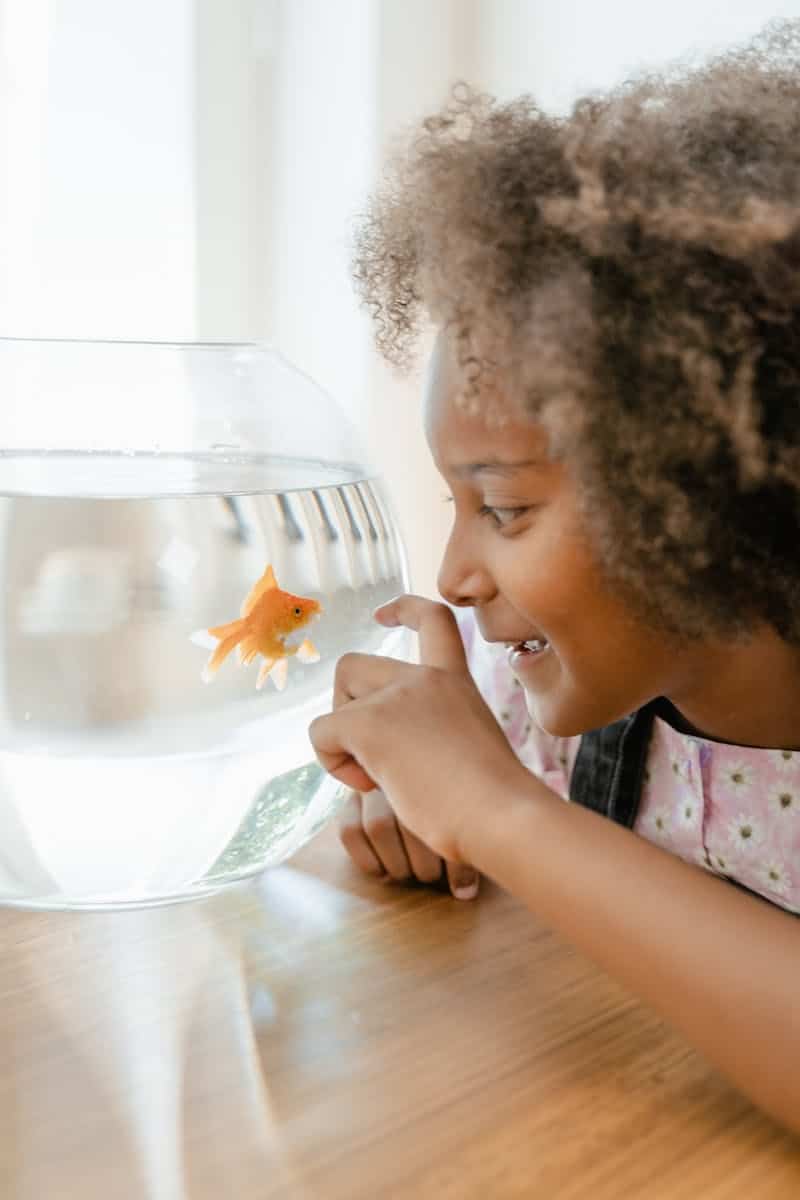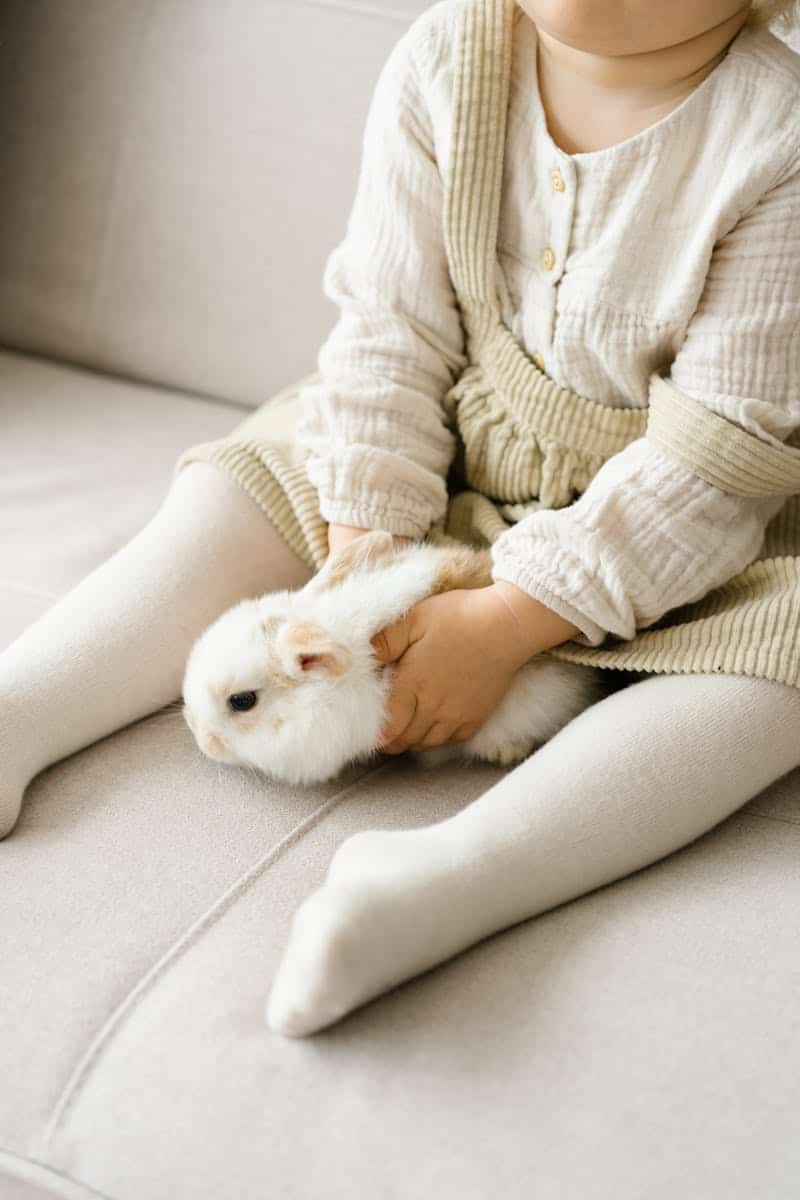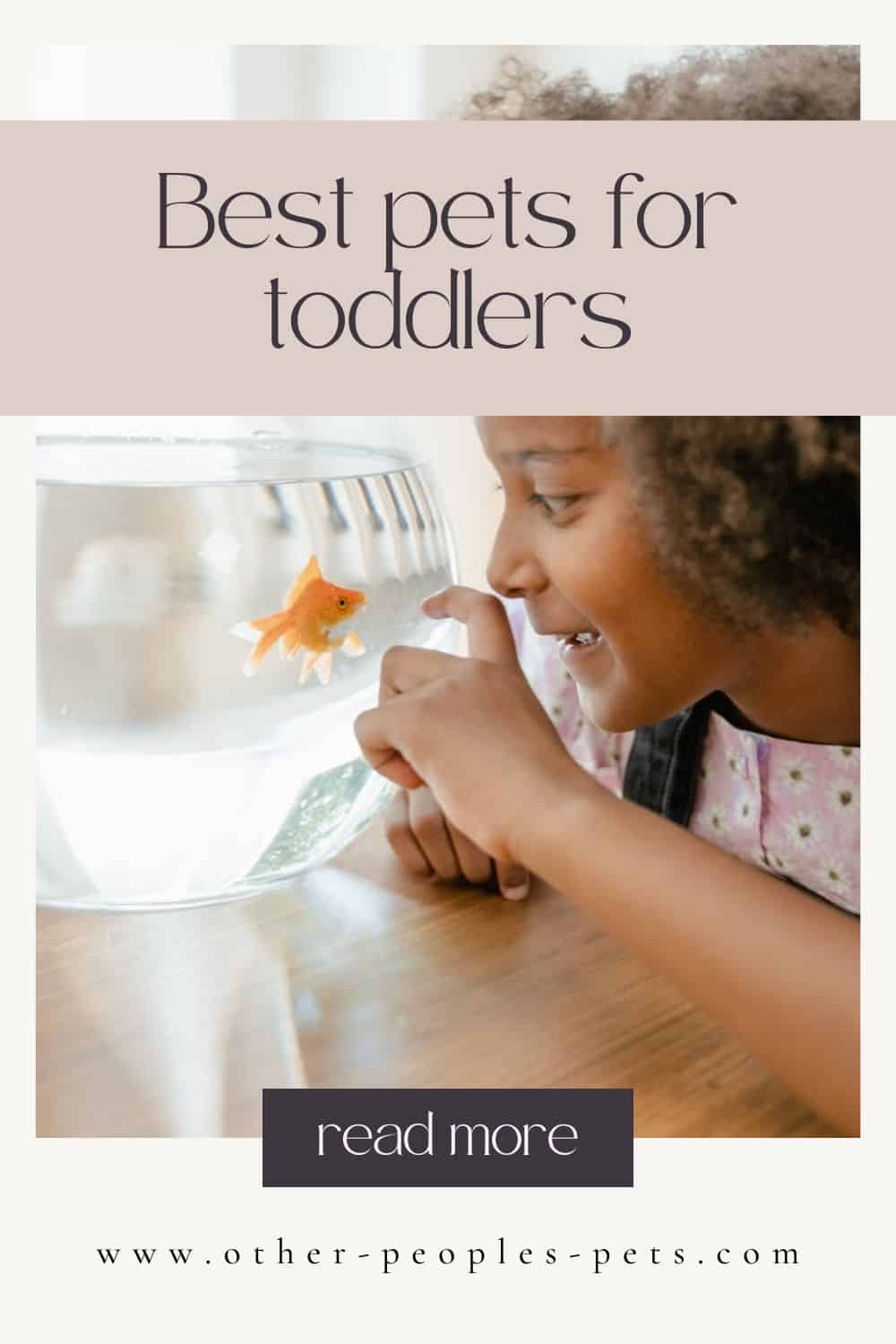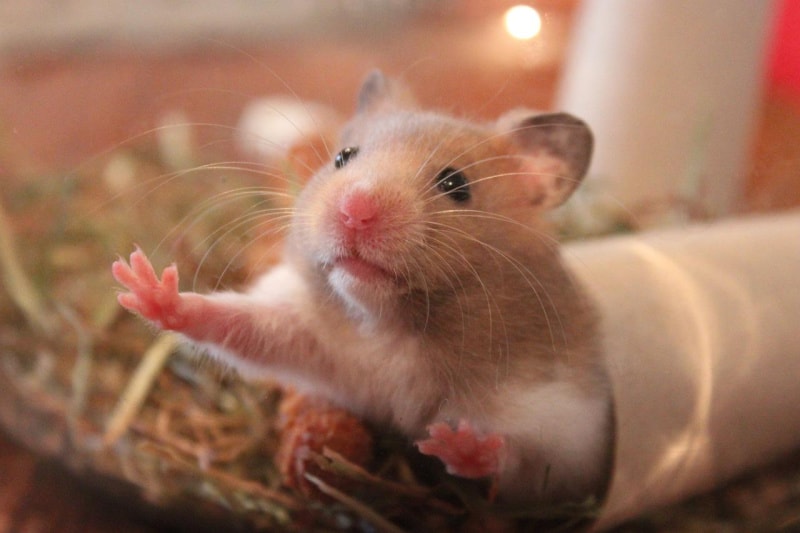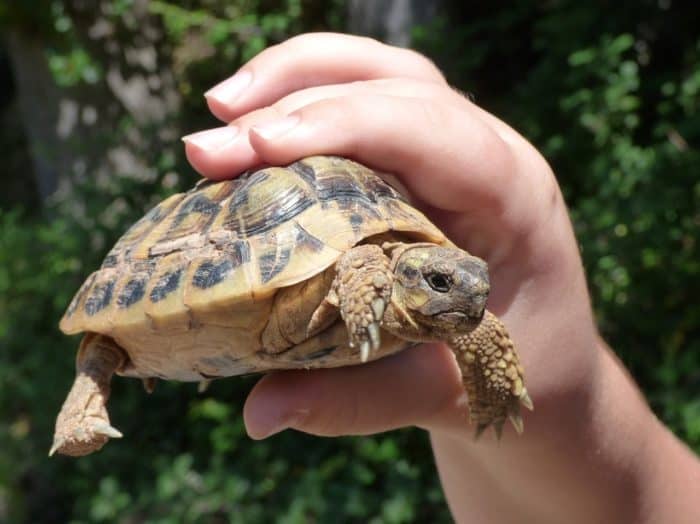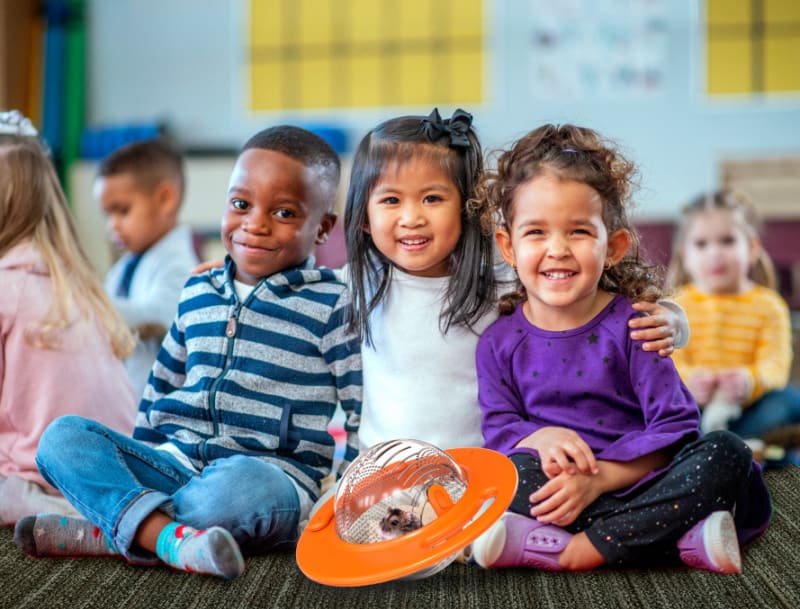Last Updated on July 20, 2024 by ellen
Check out the best pets for toddlers. Learn more about what age is best for a pet and what the easiest pets are to care for if you have a younger child.
Posts may be sponsored. This post contains affiliate links, which means I will make a commission at no extra cost to you should you click through and make a purchase. As an Amazon Associate I earn from qualifying purchases.
Table of Contents
The Best Pets for Toddlers: A Comprehensive Guide
Introducing a pet into the family can be a rewarding experience, especially for young children. Pets can teach toddlers valuable lessons about responsibility, empathy, and care. However, selecting the right pet for a toddler requires careful consideration.
Factors such as the pet’s temperament, care requirements, and the family’s lifestyle should be taken into account. This article explores the best pets for toddlers, offering insights into their suitability, care needs, and tips for ensuring a harmonious relationship between the pet and your little one.
Fish: The Ideal Starter Pet
Why Fish?
Fish are often considered the ideal starter pet for toddlers. They are low-maintenance, do not require physical interaction, and can be a source of fascination for young children. Watching fish swim can be calming and educational, introducing toddlers to the concept of life cycles and aquatic habitats.
Care Requirements
– Tank Setup: Ensure the tank is the right size and equipped with a filter and heater if necessary. This starter kit is a great idea.
– Feeding: Feed the fish regularly with the appropriate type of food.
– Cleaning: Regularly clean the tank to maintain a healthy environment.
– Supervision: Toddlers can help with feeding under adult supervision to prevent overfeeding.
Talking to Toddlers About Fish
Explain to toddlers that fish are delicate and need a clean, safe environment to thrive. Use this opportunity to teach them about different fish species, their colors, and behaviors.
Guinea Pig: Gentle and Sociable
Why Guinea Pigs?
Guinea pigs are gentle, sociable animals that can be great companions for toddlers. They are larger and sturdier than other small pets, making them easier for young children to handle.
Care Requirements
– Housing: Provide a spacious cage with bedding, hiding spots, and chew toys.
– Diet: Guinea pigs need a balanced diet of hay, fresh vegetables, and pellets.
– Grooming: Regular grooming is necessary, especially for long-haired breeds.
– Supervision: Always supervise interactions to ensure the guinea pig is handled gently.
Talking to Toddlers About Guinea Pigs
Teach toddlers to approach guinea pigs calmly and handle them gently. Explain that guinea pigs communicate through sounds and body language, which can be a fun aspect for children to observe and learn.
Rabbit: Playful and Affectionate
Why Rabbits?
Rabbits are playful and affectionate pets that can form strong bonds with their human companions. They are active and enjoy interactive play, making them a delightful addition to a household with toddlers.
Care Requirements
– Housing: Provide a spacious, secure enclosure with ample room for hopping and playing.
– Diet: A rabbit’s diet should include hay, fresh vegetables, and a limited amount of pellets.
– Grooming: Regular grooming is necessary to keep their coat healthy.
– Supervision: Monitor interactions to ensure the rabbit is not startled or mishandled.
Talking to Toddlers About Rabbits
Explain to toddlers that rabbits are sensitive and can be scared by loud noises or sudden movements. Encourage gentle petting and teach them to respect the rabbit’s space.
Cat: Independent and Entertaining
Why Cats?
Cats are independent yet affectionate animals that can adapt well to living with toddlers. They are playful and can entertain themselves, but also enjoy human interaction and companionship.
Care Requirements
– Litter Box: Ensure the litter box is kept clean and easily accessible.
– Feeding: Provide a balanced diet with appropriate portions.
– Grooming: Regular brushing can help reduce shedding and hairballs.
– Supervision: Supervise playtime to ensure the cat and toddler interact safely.
Talking to Toddlers About Cats
Teach toddlers that cats have their own personalities and may need time alone. Show them how to pet the cat gently and explain that pulling on tails or ears can hurt the cat.
Hamster: Small and Fun
Why Hamsters?
Hamsters are small, nocturnal animals that can be entertaining to watch. They are suitable for families with space constraints and can teach toddlers about the responsibilities of pet ownership.
Care Requirements
– Cage: A secure cage with bedding, a wheel, and tunnels for exercise and exploration.
– Diet: A hamster’s diet includes pellets, fresh fruits, and vegetables.
– Cleaning: Regular cleaning of the cage is essential.
– Supervision: Monitor handling to prevent the hamster from escaping or getting hurt.
Talking to Toddlers About Hamsters
Explain that hamsters are small and fragile, requiring gentle handling. Teach toddlers to observe the hamster’s activities and routines, and to respect their nocturnal nature.
Turtle: Low-Maintenance and Fascinating
Why Turtles?
Turtles are low-maintenance pets that can be fascinating for toddlers to watch. They have long lifespans and can provide years of companionship.
Care Requirements
– Tank Setup: A suitable tank with a water area and a basking spot.
– Diet: Turtles need a varied diet of commercial turtle food, vegetables, and occasional protein.
– Cleaning: Regular cleaning of the tank and water changes.
– Supervision: Supervise interactions to ensure the turtle is not mishandled.
Talking to Toddlers About Turtles
Teach toddlers that turtles are slow and steady, and that they need both water and land to stay healthy. Explain the importance of washing hands after handling the turtle.
Encouraging Supervision and Safe Interactions
Supervision is crucial when toddlers interact with pets. Always monitor their interactions to ensure the safety of both the child and the pet. Set clear rules for handling and playing with the pet, and reinforce these rules consistently.
Tips for Talking to Toddlers About Pets
– Use Simple Language: Explain concepts in simple terms that toddlers can understand.
– Be Patient: Reiterate the importance of gentle handling and respect for the pet’s needs.
– Lead by Example: Demonstrate how to interact with the pet safely and kindly.
– Involve Them in Care: Let toddlers participate in age-appropriate tasks, such as filling the water bowl or brushing the pet.
What Age is Appropriate for a Pet?
The appropriate age for introducing a pet depends on the child’s maturity and the type of pet. Generally, children as young as three can start learning about pet care with supervision. By age five, many children can take on more responsibilities, such as feeding and grooming, with guidance from adults.
Conclusion
Choosing the right pet for a toddler involves considering the pet’s temperament, care needs, and the family’s lifestyle. Fish, guinea pigs, rabbits, cats, hamsters, and turtles each offer unique benefits and challenges.
By fostering a safe and respectful relationship between toddlers and pets, families can enjoy the many rewards that come with pet ownership. Through supervision and education, toddlers can learn valuable lessons about empathy, responsibility, and the joy of caring for another living being.

Ellen runs a small pet sitting business in southern Vermont. She has experience with a variety of small animals, dogs and cats. She has also cared for ducks, chickens and rabbits. Combined, she has over 20 years of experience in pet care and pet sitting.
